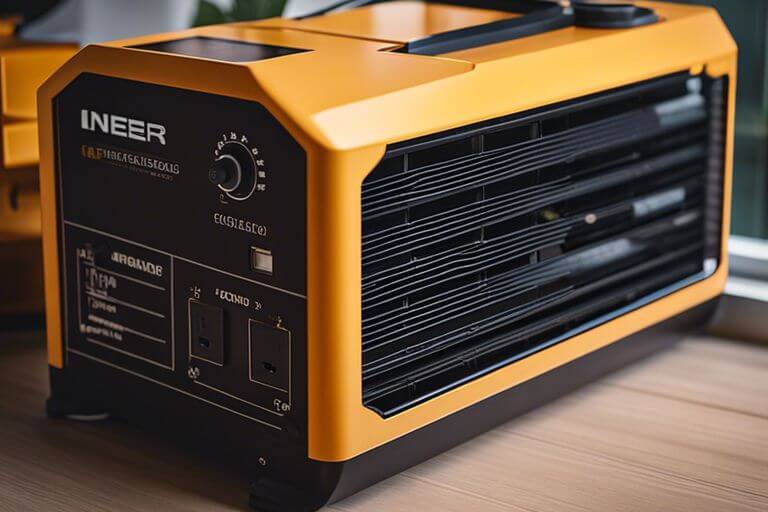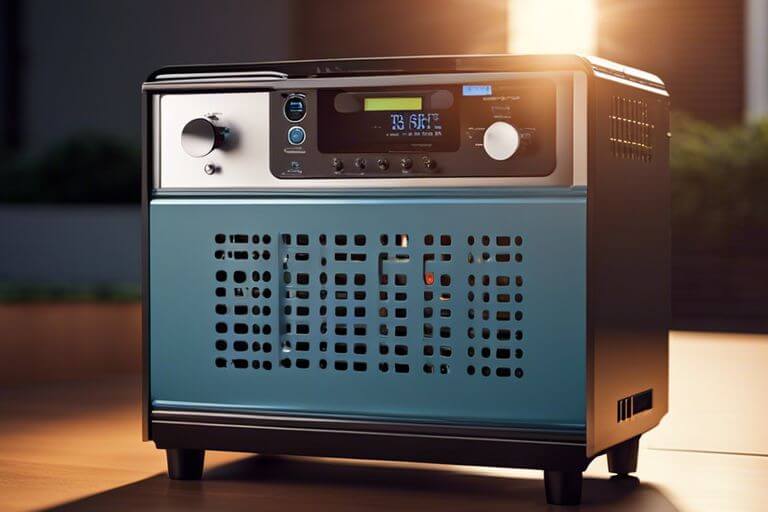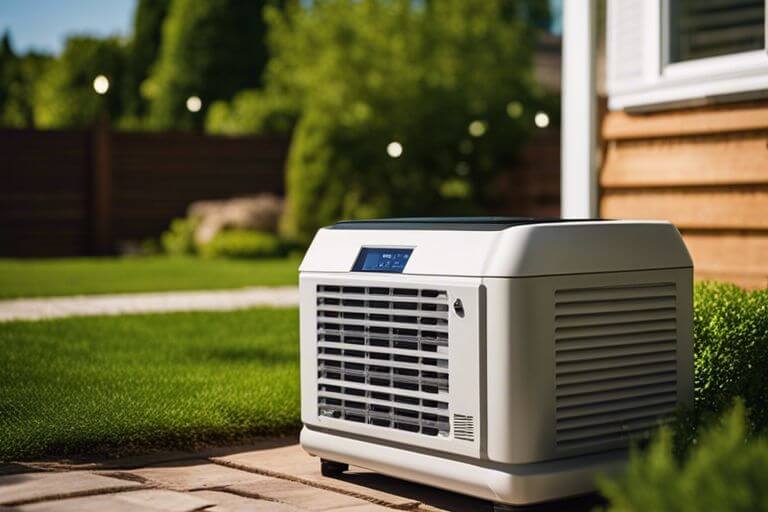Solar generators can be a cost-effective and environmentally friendly way to power your home. If you’re considering making the switch to solar energy, you might be wondering how big of a solar generator you’ll need to run your house smoothly. In this post, we’ll break down the factors that determine the size of the generator you require, so you can make an informed decision for your home.
Key Takeaways:
- The size of the solar generator needed to run a house depends on the power requirements of the appliances and devices in the home.
- Calculating the energy needs of the house is crucial in determining the size of the solar generator required.
- Consulting with a solar energy professional can help in accurately sizing the solar generator based on your specific energy usage and needs.

Determining Your Energy Needs
The How Big Should My Solar Generator Be? article covers necessary aspects to consider when determining the size of your solar generator for your home. Understanding your energy needs is crucial for choosing the right system to power your household efficiently.
Calculating Your Daily Energy Consumption
The amount of energy your household consumes daily plays a significant role in determining the size of the solar generator you need. To calculate this, you should review your electricity bills to see your average daily usage in kilowatt-hours (kWh). This information will help you estimate the capacity of the solar generator required to meet your energy needs effectively.
Factors Affecting Energy Requirements
Your energy requirements can also be influenced by several crucial factors. These include the size of your home, the number of occupants, the types of appliances/devices you use, and your daily habits. Additionally, the climate and weather conditions in your area can affect the efficiency of your solar generator. The orientation and shading of your roof, as well as local regulations and incentives, can also impact the system’s performance. Considering these factors will help you determine the appropriate size of the solar generator to power your home efficiently.
- The size of your home and the number of occupants.
- The types of appliances and devices you use on a daily basis.
As you analyze these factors, remember that the goal is to size your solar generator optimally to meet your energy needs while ensuring cost-effectiveness and environmental benefits. Make sure to consult with a professional to guide you through the process and help you make an informed decision.
Sizing Your Solar Generator
Little by little, you are getting closer to figuring out the right size solar generator to power your home. One of the critical steps in this process is determining the wattage and voltage requirements for your household needs.
Wattage and Voltage Requirements
An necessary factor in sizing your solar generator is understanding your wattage and voltage requirements. You need to calculate the total wattage of all the appliances and devices you plan to power simultaneously. Additionally, consider the voltage requirements of your electronics to ensure your solar generator can handle the load efficiently.
Inverter Capacity and Efficiency
The next step in determining the size of your solar generator is evaluating the inverter capacity and efficiency. The inverter is responsible for converting the DC power generated by your solar panels into usable AC power for your home. It’s crucial to select an inverter with sufficient capacity to meet your peak power demand while also considering its efficiency to minimize energy loss.
For instance, if you have high-power appliances like air conditioners or refrigerators that require a significant amount of energy to start up, you’ll need an inverter with a higher capacity to handle these power surges effectively.
Battery Capacity and Type
Your solar generator’s battery capacity and type play a crucial role in ensuring uninterrupted power supply to your home. The battery capacity determines how long your solar generator can power your appliances without sunlight, while the battery type affects factors like cycle life and depth of discharge.
Your energy storage requirements will depend on your daily electricity usage and how many days of autonomy you desire in case of prolonged cloudy weather. It’s necessary to choose a battery with adequate capacity and the right type to meet your specific needs and ensure reliable performance.
Assessing Your Roof’s Solar Potential
To understand how big of a solar generator you need to run your whole house, you must consider your roof’s solar potential. For detailed information on sizing a solar generator for your home, check out What Size Solar Generator to Run Your Whole House?
Measuring Roof Size and Orientation
Your roof’s size and orientation play a crucial role in determining its solar potential. The amount of available sunlight depends on the roof’s pitch, azimuth, and shading from nearby trees or structures. By measuring your roof’s dimensions and understanding its orientation, you can assess how much sunlight it receives throughout the day.
Shading and Obstruction Considerations
Orientation is necessary in determining the solar potential of your roof. Shading from trees, buildings, or other obstructions can significantly impact the efficiency of your solar panels. To maximize energy production, consider trimming trees or removing objects that cast shadows on your roof. Additionally, factors such as roof angle and nearby structures can affect how much sunlight your roof receives.
Assessing shading and obstructions is crucial to optimizing the performance of your solar generator. By ensuring that your roof has minimal shading and obstruction, you can harness more sunlight and generate greater energy savings for your home.
Local Building Codes and Regulations
Your local building codes and regulations may dictate the size and placement of solar panels on your roof. Understanding these guidelines is necessary before installing a solar generator. Factors like setback requirements, roof load capacity, and aesthetic considerations may impact the size and configuration of your solar system.
To comply with local regulations and ensure a smooth installation process, consult with a solar energy expert who can help you navigate the permitting and approval process. By adhering to building codes and regulations, you can install a solar generator that meets safety standards and maximizes energy efficiency for your home.
Choosing the Right Solar Generator Components
Solar Panels: Efficiency and Durability
All solar panels are not created equal, and it’s important to choose the right ones for your solar generator. Look for panels with high efficiency ratings, as this will determine how much power they can generate. Additionally, consider the durability of the panels to ensure they can withstand the elements and last for years to come.
Charge Controllers: MPPT vs. PWM
When choosing a charge controller for your solar generator, you have two main options: Maximum Power Point Tracking (MPPT) or Pulse Width Modulation (PWM). MPPT controllers are more efficient and can harvest more energy from your solar panels compared to PWM controllers. However, they also tend to be more expensive.
MPPT controllers are a great choice if you want to maximize the power output of your solar generator, especially in low light conditions or when the panels are not operating at their peak efficiency.
Inverters: Pure Sine Wave vs. Modified Sine Wave
Choosing the right inverter for your solar generator is important for converting the DC power from the solar panels into AC power that your household appliances can use. Pure Sine Wave inverters produce clean and stable power similar to what you get from the grid, making them suitable for sensitive electronics. On the other hand, Modified Sine Wave inverters are more affordable but may not be compatible with all devices.
With a Pure Sine Wave inverter, you can safely power all your electronics, including laptops, smartphones, and kitchen appliances, without worrying about damaging them due to inconsistent power supply.
Considering Energy Storage Options
Many factors come into play when deciding on the size of a solar generator to run your house, and one of the critical considerations is the energy storage options you choose. By selecting the right battery type and understanding the differences between deep cycle batteries and regular batteries, you can optimize the efficiency and effectiveness of your solar power system.
Battery Types: Lead-Acid, Lithium-Ion, and More
- Lead-Acid Batteries
- Lithium-Ion Batteries
- Gel Cell Batteries
- AGM Batteries
- Flow Batteries
After evaluating the specific needs of your household and the available budget, you can make an informed decision on which battery type suits you best.
Deep Cycle Batteries vs. Regular Batteries
Options such as deep cycle batteries are specifically designed to provide a steady amount of current over an extended period. In contrast, regular batteries, like car batteries, are designed to deliver short bursts of high current for starting engines.
Batteries can significantly impact the efficiency and longevity of your solar power system. Deep cycle batteries are better suited for energy storage in solar applications as they can withstand regular discharging and recharging cycles without affecting their performance.
Battery Maintenance and Monitoring
Considering the maintenance and monitoring of your energy storage system is vital to ensure the longevity and efficiency of your solar generator. Regularly checking the battery charge levels, cleaning terminals, and monitoring overall system performance can help prevent potential issues and maximize the lifespan of your batteries.
More advanced systems may include battery monitoring software that provides real-time data on your energy storage levels and system performance. By actively monitoring your batteries, you can address any issues promptly and optimize the efficiency of your solar power system.

System Design and Installation
Now, if you are wondering how much wattage is needed to power a whole house with a single solar panel generator, you can refer to this informative article on Quora for more insights.
String Sizing and Wiring
The sizing of the strings and wiring in your solar panel system is crucial for optimal performance. Properly sizing the strings ensures that the voltage and current levels are within safe operating limits for your inverter. Additionally, correct wiring helps minimize energy loss and ensures efficient power distribution throughout your system.
Grounding and Bonding Requirements
With regard to grounding and bonding requirements for your solar generator system, these are necessary for ensuring the safety and reliability of your setup. Proper grounding helps protect your system from electrical faults and lightning strikes, while bonding ensures that all metal components are connected to prevent electrical hazards.
A qualified electrician can help you determine the specific grounding and bonding requirements based on your system size and local regulations. It’s important to adhere to these guidelines to safeguard your system and household against potential risks.
Installing a Grid-Tie System vs. Off-Grid System
Designing and installing a grid-tie system means that your solar generator is connected to the utility grid, allowing you to sell excess power back to the grid. On the other hand, an off-grid system operates independently of the utility grid, requiring battery storage to provide power when sunlight is not available.
Requirements for grid-tie systems involve compliance with utility interconnection standards and regulations, while off-grid systems necessitate additional considerations such as battery sizing and system autonomy. Your choice between these two systems depends on your energy goals, location, and budget.
Conclusion
Now that you’ve learned about the factors to consider when determining the size of a solar generator needed to power your house, you can make a more informed decision. Remember to calculate your energy usage, consider the peak sun hours in your location, and factor in any additional appliances or electronics you may want to power. It’s important to strike a balance between a generator that is big enough to meet your needs but not so large that it becomes inefficient or unnecessarily expensive.
Ultimately, investing in a solar generator for your home can help you save money on electricity bills, reduce your carbon footprint, and provide a reliable source of backup power. By carefully evaluating your energy needs and taking the necessary steps to size your solar generator appropriately, you can enjoy the benefits of clean, renewable energy for years to come.
FAQ
Q: How do I determine the size of a solar generator needed to run my house?
A: To determine the size of a solar generator needed to run your house, you should calculate your average daily energy consumption in kilowatt-hours (kWh). This can be done by reviewing your electricity bills or using an energy consumption calculator. Once you have this information, you can estimate the size of the solar generator required to meet your energy needs.
Q: What factors should I consider when selecting the size of a solar generator for my house?
A: When identifying the size of a solar generator for your house, it is important to consider factors such as your average daily energy consumption, the peak power demand of your household appliances, the available space for solar panels, the amount of sunlight your location receives, and whether you want to be completely off the grid or use solar power as a supplemental energy source.
Q: How can I determine if my solar generator is big enough to run my entire house?
A: To determine if your solar generator is big enough to run your entire house, you should compare the size of the solar generator to your average daily energy consumption. If the solar generator can produce enough energy to meet or exceed your daily consumption, then it should be sufficient to run your entire house. Additionally, you can monitor your energy usage and make adjustments to ensure that your solar generator meets your household’s energy needs.
